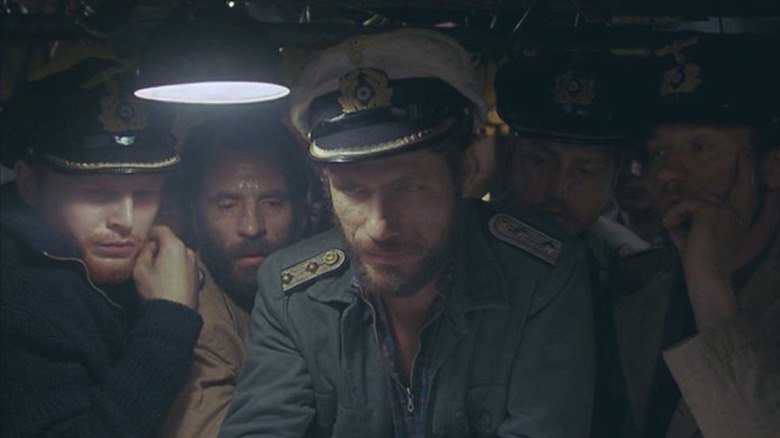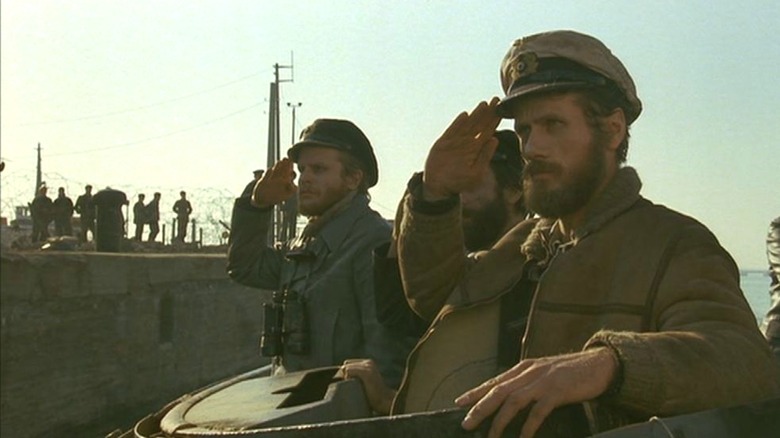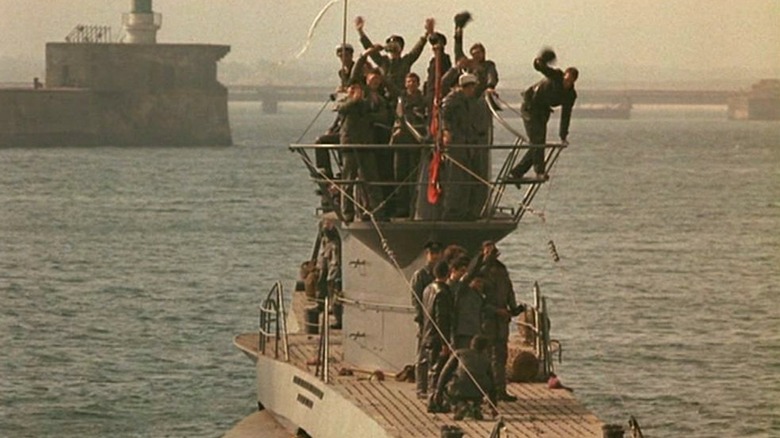According To The U.S. Navy, This Is The Most Accurate Submarine Movie Ever Made
Submarines have been an important aspect of naval warfare for a long time, as the history of subs sets them firmly in the past. Still, it was during the 20th century that things began to change, and as technology improved, submarines became increasingly more essential to naval warfare operations. Outside the military, there's plenty of fascination with the undersea boats, and the first one to appear in cinema was the Nautilus in the 1916 silent film adaptation of Jules Verne's "20,000 Leagues Under the Sea."
That film was entirely fictitious, as many are, but there have been plenty of realistic submarine movies released in the century since. Deep-diving military submarines are incredibly impressive pieces of military hardware, and some of the most advanced warships of all time have served beneath the waves. Movies like "The Hunt for Red October" and "Crimson Tide" are exceptional submarine films. Still, they're not necessarily the most accurate, according to some of the highest-ranking sailors to serve in the United States Navy.
In 2019, the U.S. Naval Institute asked several captains, admirals, enlisted personnel, and others what they believed was the most realistic submarine movie ever made. Seeing as the officers who participated have real-world experience serving aboard and commanding U.S. Navy submarines, their opinions carry weight. While many submarine films were covered, the consensus among them all is that writer-director Wolfgang Peterson's 1981 film "Das Boot" is the most accurate submarine movie ever made.
What makes Das Boot so accurate?
Wolfgang Peterson wrote and directed "Das Boot," which is based on Lothar-Günther Buchheim's 1973 novel of the same name. The film tells the story of the U-96 and the crew as they engage Allied Forces during their patrol amidst the Battle of the Atlantic. The film mixes in moments of intense excitement and dread, interspersed with scenes of tedium, as the sailors have little to do but wait around quietly. These moments are part of what makes "Das Boot" so realistic, as many sailors noted in their comments to the U.S. Naval Institute.
Admiral Robert Burke (Ret.), the former Vice Chief of Naval Operations, wrote that in "Das Boot," "You can feel the crew's hopes and dreams as well as their fear and claustrophobia. You can almost smell the hydraulic fluid, diesel fuel, and sweat." He added that it's easy to relate to the crew, and you watch them undergo their ordeal. Other officers and enlisted personnel shared similar opinions. Admiral James G. Foggo III (Ret.) directly stated that it "is the most intense submarine movie ever made."
The most notable aspect of "Das Boot" is how confined Peterson makes the sailors and audience feel, as there's not a lot of room inside a U-boat. Add to that the fear and anxiety of combat and the intense moments between, and you're left with a submarine film that works on every level. While most agreed that "Das Boot" was king, some of the other noted submarine films include "The Wolf's Call," "Run Silent, Run Deep," and "Submarine D-1."
The U-boat that inspired the film
The German Navy's Unterseeboot, or U-boats, were some of the most legendary ships of World War II – German U-boats were very different from modern submarines, but that didn't make them any less deadly. The boat that inspired the film was real: The U-96 was a Type VIIC U-boat that served the Kriegsmarine (German Navy) with distinction throughout the war. The U-96 took part in the Battle of the Atlantic, which was one of the hardest-fought engagements of WWII, as it lasted through the entire duration of the conflict. When it was over, more than 3,500 Allied merchant ships and nearly 200 warships were sunk by U-boats.
The U-96 was a key component in Germany's success in hindering Allied shipping. It sank 27 ships totaling over 181,000 gross register ton. Four additional ships were damaged, and one target was a total loss. The U-96 continued to serve throughout the war, but shortly before it was over, the boat was decommissioned. After she was taken out of the inventory in February 1945, she was anchored at Wilhelmshaven, Germany.
That's where American bombs ultimately found her when planes from the 8th Air Force sank the U-96 during a bombing raid on March 30, 1945. Lothar-Günther Buchheim served aboard the vessel as a war correspondent, and he recounted his adventures in his semi-autobiographical novel, which inspired the film. While there are fictional elements spread throughout the movie, much of the combat actions and the U-96's use in the Battle of the Atlantic are accurate.


